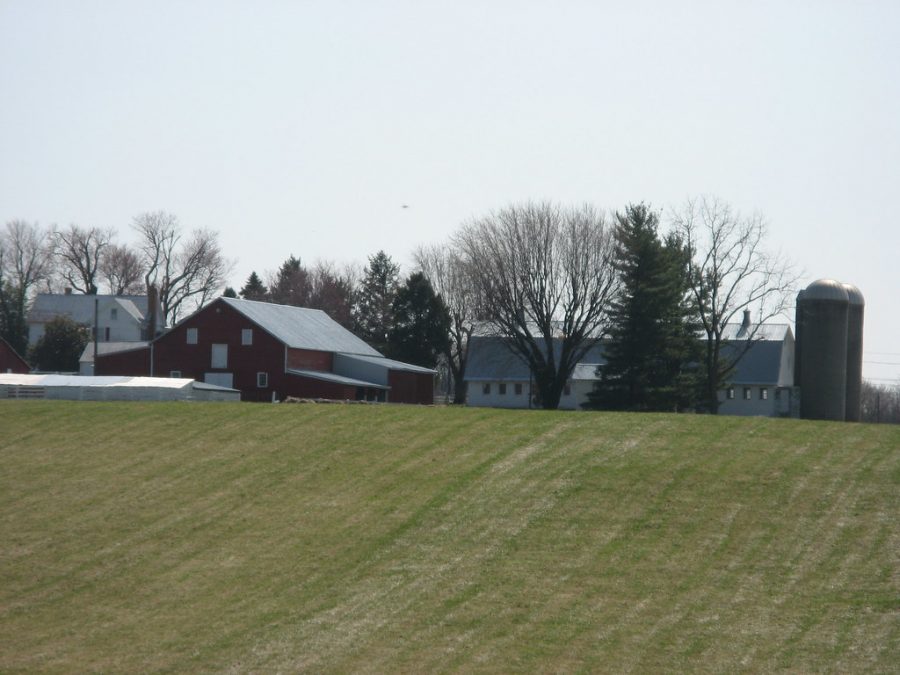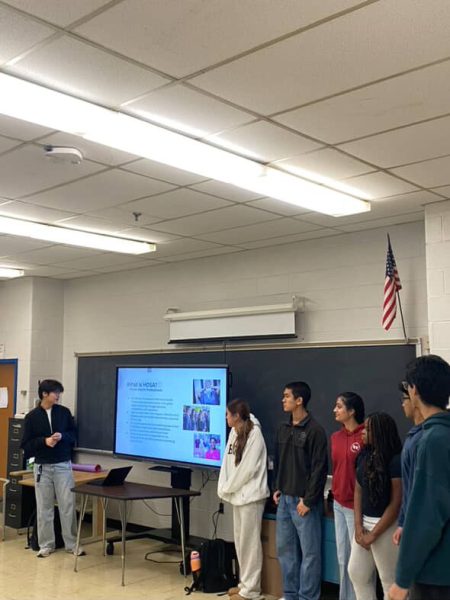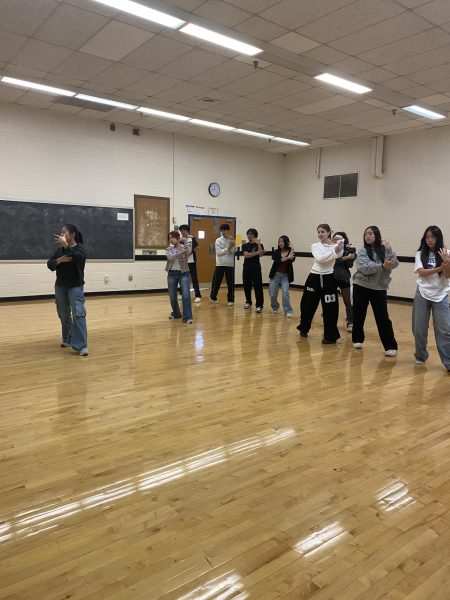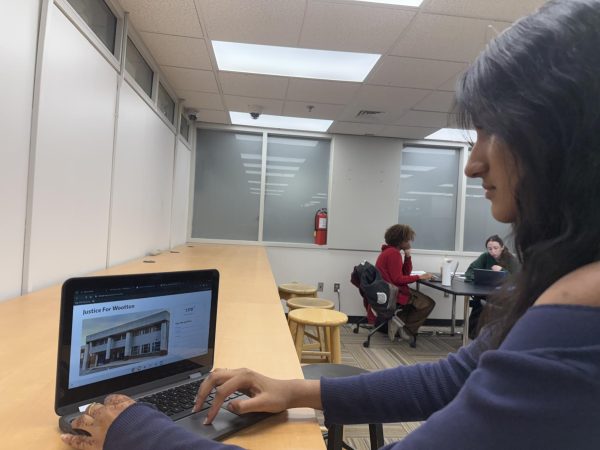The future for historic Belward Farm holds uncertainty
Photo by Preservation Maryland with permission from Google Commons
Side view of the Belward Farm barns and farmhouse.
Belward Farm is a prominent sight for Montgomery County residents driving along Darnestown Road. As roads and shopping centers are built around it, the historic farm has remained intact, but it won’t be able to for much longer.
The farm was originally purchased in 1873 by Ignatius Beall Ward, where he raised his eight children. His great granddaughter Elizabeth Banks, a special education teacher in Montgomery County schools inherited the farm in 1958. Banks took pride in her farm and loved working on it.
Banks was a stern teacher in Montgomery schools for 36 years; she didn’t hide her opinions but was well-loved by her students. She once ran members of the county planning board off her land with a shotgun, adamant about protecting the farm and not letting it become another housing development. According to the Washington Post, “She stood firm, an increasingly lonely voice: She said no to developers wanting to build more houses, no to the county government hoping to build an office park, no to businesses coveting her property in the heart of a boom.”
Eventually, Banks could no longer afford the roadwork tax bill and had to sell. Johns Hopkins had a campus a mile away but wanted to expand. After two years they reached an agreement in 1989.
Banks chose to sell to Johns Hopkins because she was reassured throughout the entire process that Johns Hopkins would protect her land. Banks sold for $5 million, considerably less than what she could’ve gotten selling on the commercial market.
It was agreed that 30 to 35 acres could be developed commercially but the university would need to restrict the rest to “academic and related purpose.” A few years later Hopkins donated the 30 acres to Montgomery County, which angered Banks who never wanted the county to own any part of Belward.
With the 108 acres owned by Johns Hopkins, their plan for a development with low-rise buildings and 28 acres of open space was approved in 1996. But nothing was built and they began to rethink their plan. After Banks died in 2005, they announced their proposal for science city. “They wanted to triple the density from the 1.8 million square feet of commercial space the county had approved while Banks was still alive. There would be no bucolic campus; Belward instead would be swallowed up in development, surrounded by tall buildings,” according to the Washington Post.
Bank’s nephew Tim Newell, as well as other county residents, fought against this, attending planning board meetings and public hearings. Eventually, Montgomery County approved Johns Hopkins’ plan but cut the six million square foot request to 4.6 million with 50 acres of open space. “After hearing about Johns Hopkins plan for Belward, I imagine the traffic is going to increase a lot. I live on Darnestown road so this is very upsetting,” freshman Maria Sofronas said.
Bank’s family filed a lawsuit in 2011. Hopkins argued that the contract Banks agreed to allows them to develop what they proposed, while Bank’s family argued they have to take into account Banks’ intentions for Belward. Banks’ heirs were not asking for any money in the suit, only that Hopkins lived up to their original promise made to Banks herself. “Everybody, I mean everybody, understood the reasons she got the money she got was because it was going to be a research campus, and the value of the land was less than what she otherwise would get out of it,” Bank’s friend Merle Steiner said.
Ultimately, the court sided with Hopkins, but Belward Farm remains untouched. Hopkins has yet to begin any construction and has been private on their plan for the area in the future. With John Hopkins eventually beginning construction on the farm, all Montgomery County residents can do is enjoy the beautiful view while they still can.
Your donation will support the student journalists of Thomas S. Wootton High School. Your contribution will allow us to purchase equipment and cover our annual website hosting costs.
Elizabeth is a 2024 graduate.








John Beltracchi • May 6, 2021 at 5:04 PM
I worked at Belward Farm in High School and college Miss Banks a great influence in my life.